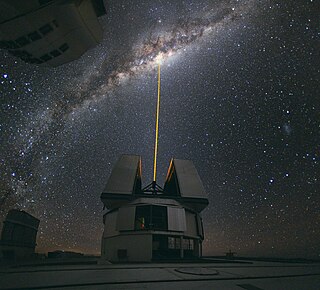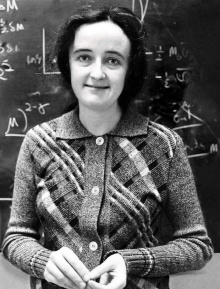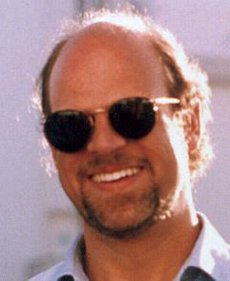
Astronomy is a natural science that studies celestial objects and phenomena. It uses mathematics, physics, and chemistry in order to explain their origin and evolution. Objects of interest include planets, moons, stars, nebulae, galaxies, meteoroid, asteroid, and comets. Relevant phenomena include supernova explosions, gamma ray bursts, quasars, blazars, pulsars, and cosmic microwave background radiation. More generally, astronomy studies everything that originates beyond Earth's atmosphere. Cosmology is a branch of astronomy that studies the universe as a whole.

Astrophysics is a science that employs the methods and principles of physics and chemistry in the study of astronomical objects and phenomena. As one of the founders of the discipline, James Keeler, said, Astrophysics "seeks to ascertain the nature of the heavenly bodies, rather than their positions or motions in space–what they are, rather than where they are." Among the subjects studied are the Sun, other stars, galaxies, extrasolar planets, the interstellar medium and the cosmic microwave background. Emissions from these objects are examined across all parts of the electromagnetic spectrum, and the properties examined include luminosity, density, temperature, and chemical composition. Because astrophysics is a very broad subject, astrophysicists apply concepts and methods from many disciplines of physics, including classical mechanics, electromagnetism, statistical mechanics, thermodynamics, quantum mechanics, relativity, nuclear and particle physics, and atomic and molecular physics.

Aleksander Wolszczan(listen) is a Polish astronomer. He is the co-discoverer of the first confirmed extrasolar planets and pulsar planets.

Joseph Hooton Taylor Jr. is an American astrophysicist and Nobel Prize laureate in Physics for his discovery with Russell Alan Hulse of a "new type of pulsar, a discovery that has opened up new possibilities for the study of gravitation."

Dame Susan Jocelyn Bell Burnell is an astrophysicist from Northern Ireland who, as a postgraduate student, discovered the first radio pulsars in 1967. The discovery eventually earned the Nobel Prize in Physics in 1974; however, she was not one of the prize's recipients.

Michel Gustave Édouard Mayor is a Swiss astrophysicist and professor emeritus at the University of Geneva's Department of Astronomy. He formally retired in 2007, but remains active as a researcher at the Observatory of Geneva. He is co-laureate of the 2019 Nobel Prize in Physics along with Jim Peebles and Didier Queloz, and the winner of the 2010 Viktor Ambartsumian International Prize and the 2015 Kyoto Prize.

Beatrice Muriel Hill Tinsley was a British-born New Zealand astronomer and cosmologist and professor of astronomy at Yale University, whose research made fundamental contributions to the astronomical understanding of how galaxies evolve, grow and die.
PSR B1257+12, previously designated PSR 1257+12, alternatively designated PSR J1300+1240, is a millisecond pulsar located 2,300 light-years from the Sun in the constellation of Virgo, rotating at about 161 times per second. It is also named Lich, after a powerful, fictional undead creature of the same name.

HD 209458 is an 8th-magnitude star in the constellation Pegasus. It is a G0V star, and is thus very similar to the Sun. Because it is located at a distance of about 159 light years, it is not visible to the unaided eye. With good binoculars or small telescope it should be easily detectable.

Robert Paul Butler is an astronomer and staff scientist at the Carnegie Institution for Science in Washington, D.C., who searches for extrasolar planets.

Raymond Davis Jr. was an American chemist and physicist. He is best known as the leader of the Homestake experiment in the 1960s-1980s, which was the first experiment to detect neutrinos emitted from the Sun; for this he shared the 2002 Nobel Prize in Physics.

An exomoon or extrasolar moon is a natural satellite that orbits an exoplanet or other non-stellar extrasolar body.

Julianne Dalcanton is an American astronomer, professor of astronomy, researcher and comet discoverer. Since September 2021 she is the director of the Simons Foundation Center for Computational Astrophysics.
Gliese 86 is a K-type main-sequence star approximately 35 light-years away in the constellation of Eridanus. It has been confirmed that a white dwarf orbits the primary star. In 1998 the European Southern Observatory announced that an extrasolar planet was orbiting the star.
HD 104304 is a binary star system in the zodiac constellation Virgo. It has a combined apparent visual magnitude of 5.54, making it visible to the unaided eye under suitable viewing conditions. The system is located at a distance of 41 light-years from the Sun based on parallax measurements. The primary component has a stellar classification of G8 IV, which means that this is a subgiant star that has left the main sequence and has begun to evolve into a giant star. The secondary is a faint red dwarf star with a class of M4V.

51 Pegasi b, officially named Dimidium, and also known as Bellerophon, is an extrasolar planet approximately 50 light-years away in the constellation of Pegasus. It was the first exoplanet to be discovered orbiting a main-sequence star, the Sun-like 51 Pegasi, and marked a breakthrough in astronomical research. It is the prototype for a class of planets called hot Jupiters.

Steven Scott Vogt is an American astronomer of German descent whose main interest is the search for extrasolar planets.

Angela Villela Olinto is an astroparticle physicist and the Albert A. Michelson Distinguished Service Professor at the University of Chicago as well as the Dean of the Physical Sciences Division. Her current work is focused on understanding the origin of high-energy cosmic rays, gamma rays, and neutrinos.














